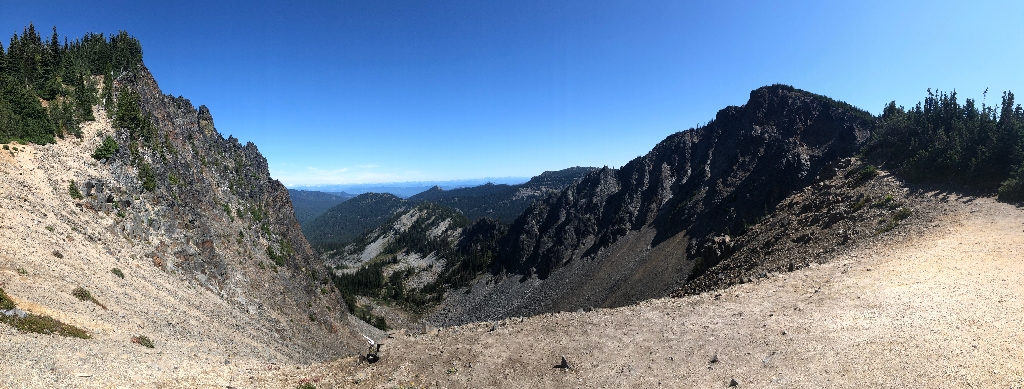
You have just walked through a subalpine meadow on a gentle south-facing slope. Now look at the steep north-facing slope ahead. It was formed as a glacier funneled lava flows along its ridge, building up higher over time. Snow on south-facing slopes tends to melt as temperatures are warmer and they are in more direct sunlight. This north-facing slope is cooler and has more moisture because it receives less direct sunlight. Even late into summer, large patches of snow may remain. Keep an eye out for animals that live on cool north-facing slopes, such as mountain goats, on the ridges and valleys to the north. Would you expect to find the same kinds of plants on both slopes? Why or why not?
Is there something we missed for this itinerary?
Itineraries across USA

Acadia

Arches National Park

Badlands

Big Bend

Biscayne

Black Canyon Of The Gunnison

Bryce Canyon

Canyonlands

Capitol Reef

Carlsbad Caverns

Channel Islands

Congaree

Crater Lake

Cuyahoga Valley

Death Valley

Dry Tortugas

Everglades

Gateway Arch

Glacier

Grand Canyon

Grand Teton

Great Basin

Great Smoky Mountains

Guadalupe Mountains

Haleakalā

Hawaiʻi Volcanoes

Hot Springs

Indiana Dunes

Isle Royale

Joshua Tree

Kenai Fjords

Kobuk Valley

Lassen Volcanic

Mammoth Cave

Mesa Verde

Mount Rainier

North Cascades

Olympic

Petrified Forest

Pinnacles

Rocky Mountain

Saguaro

Shenandoah

Theodore Roosevelt

Virgin Islands

Voyageurs

White Sands

Wind Cave

Yellowstone

Yosemite

Zion